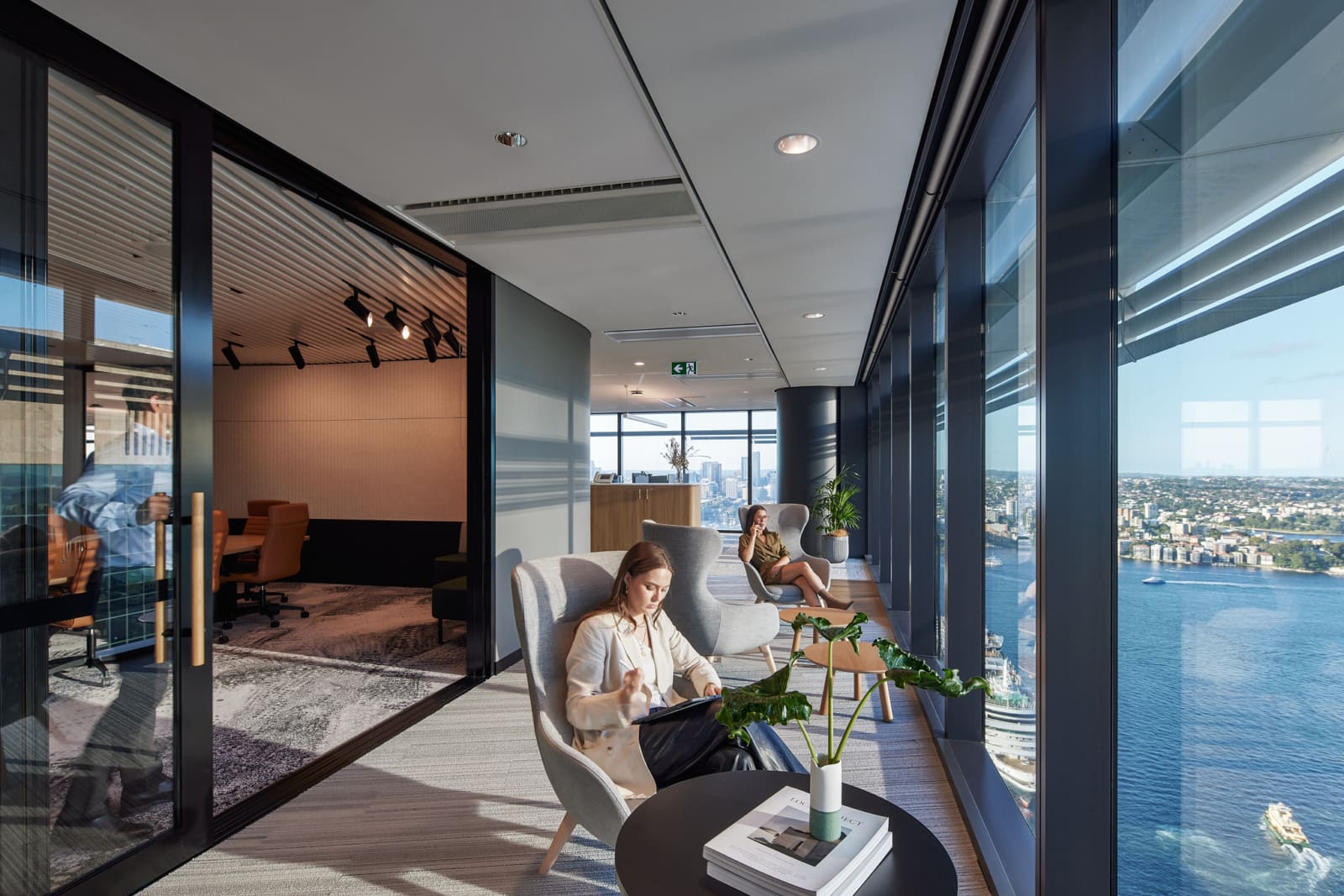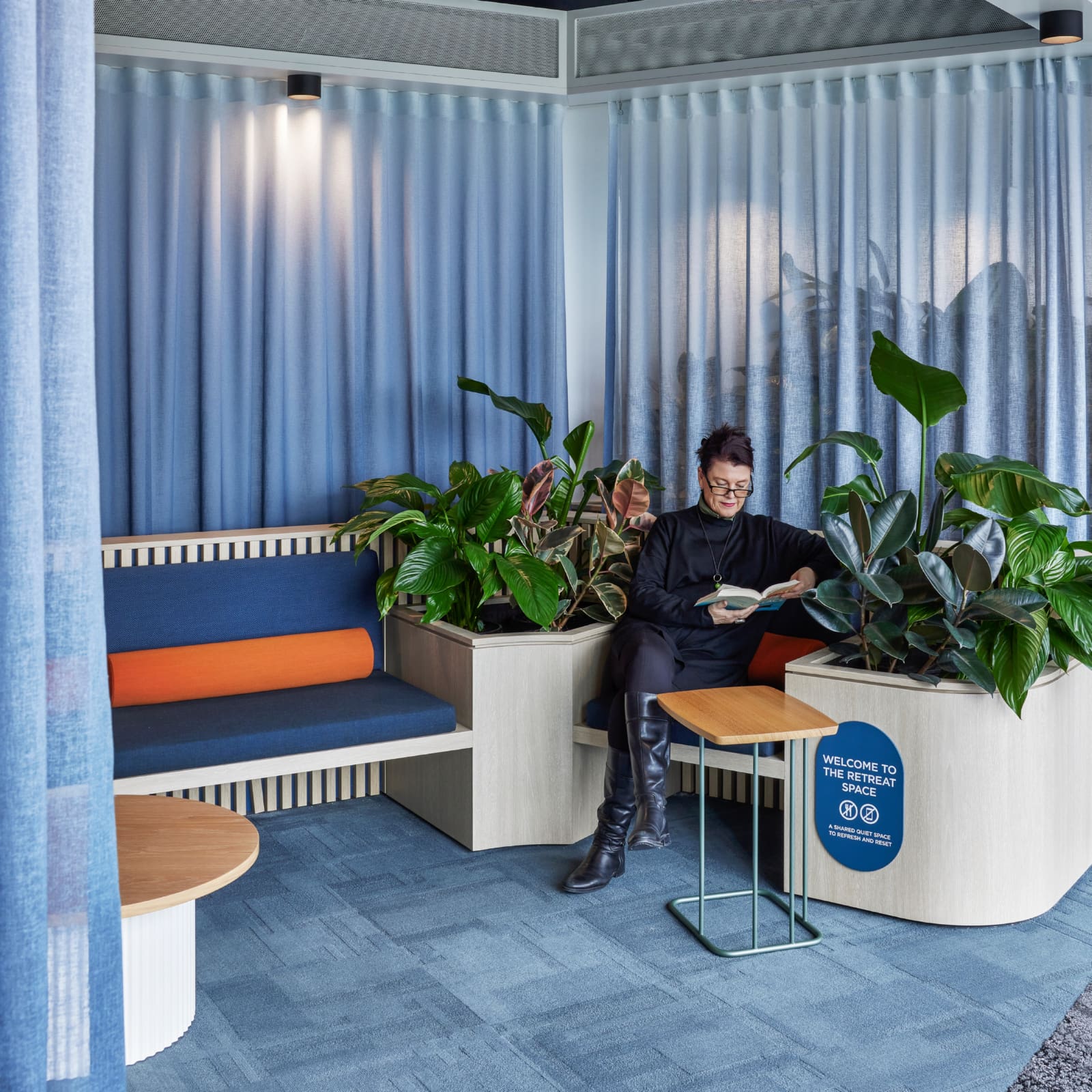A shift towards less desks and more space for employee wellness and amenities is already being felt across workplace design in 2023, as demand for CBD office space across Australia grows.
We are seeing more and more that the location of the office is crucial to the success of the office environment, with office locations that serve employees and not just businesses a key driver for the workforce.
The perception of what ‘the office’ is has expanded. It’s no longer the four walls that house a company, but the amenities within the office building (its retail realm, end of trip facilities, concierge services, executive centres etc) and the precinct where the office is located (close to gym, shopping, cafes, public transport hubs).
Demand of commercial space was up 0.1 per cent across Australia’s CBD over the past six months, according to Property Council Australia, although CBD vacancy had increased from 12 to 12.5 per cent nationally. The Sydney office market remains the benchmark with the 90,141 sqm of new stock expected in 2023, followed by 147,357 sqm in 2024 – the highest in Australia. Brisbane’s city centre office demand has skyrocketed to over four times the historical average.
Even with businesses adapting to hybrid working arrangements, the role of the office remains centred around the employee experience. Workplace design is critical to attracting clients and staff beyond the company brand in 2023 and incentivising productivity and return-to-office numbers.
Across Sydney, businesses are mostly staying put and renegotiating their leases. However, renewed leases are much shorter. Those that were already on the road to relocation at the end of last year, are opting for smaller footprints where they can, others are consolidating key offices into single, larger footprints. We saw this with Westpac, who consolidated 3 offices into one central hub in Parramatta in September last year.
This means there has been a shift in the expectation for what the office should look like and how it should perform. There is less emphasis on the desk and more emphasis on a suite of spaces for task and timed based work – including social interaction, team-based meetings/collaboration, and focus work.
Five workplace design changes we are witnessing in 2023:
1. Diversity, Equity, and Inclusion (DEI) at the Forefront: With increased awareness and emphasis on promoting diversity and inclusivity, there is a greater emphasis on third spaces that support diversity. We are noticing that one of those emerging spaces within the equity and inclusion realm are spaces specifically created for the neurodiverse population or those within the autism spectrum. This means spaces need to allow for sensory design (textures, lighting, sound, colour)
2. The Importance of Premium Amenities: In this instance, an amenity is defined as the diversity of spaces aside from the desk or meeting room. Clients are looking at the overall office experience to provide greater employee engagement and prioritised satisfaction (and attraction back to the office). The emerging workforce has moved around from company to company and they are well aware of the amenities of competitors. This doesn’t mean greater spend for a designed office, just a better-designed office that fully supports the work culture, hybrid work, diversity, collaboration. For our client at Westpac this meant retreat spaces to allow for de-stressing and resetting after periods of high intense work.
3. Shift in Hybrid Work: Emerging data indicates that Hybrid work is fluid and varies from organisation to organisation and from sector to sector. Whilst the early data saw the workforce coming to the office for collaboration, emerging data now has identified that focus work is the primary reason for being in the office – this then shifts the physical requirements for the design of the office.
4. Technology Integration: As technology continues to play a critical role in the workplace, clients are seeking insights on greater integration of technology for a seamless experience and provide an equal footing for those dialling in with those that are in the room. The generic meeting room design is done away to allow for spaces with intelligent technology for content and user capture.
5. Wellness and Sustainability: The younger demographic of workers sees greater importance in an organisations environmental impact and higher emphasis on community policies (as opposed to salary and remuneration). This means, companies are becoming more transparent with regards to building selection, looking for the building’s performance with regards to energy consumption, waste streams etc. Equally, this socially conscious demographic is seeking out companies that have more socially conscious initiatives.







